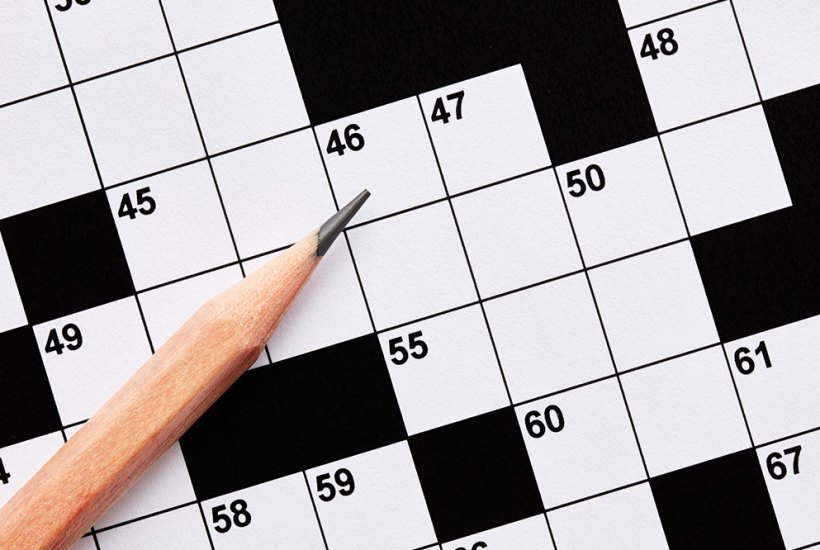As regular readers will know, I am an inveterate fan of cryptic crosswords. At the everyday level, they are the perfect way to kill 20-50 minutes of otherwise boring time. There is a refined elegance to clue-setting: the best are little works of art. Crossword-solving also cultivates the useful talent of looking beneath the clue’s explicit surface meaning to the meaning lurking beneath – which trains solvers in the essential creative act of seeing the same thing from different perspectives.
Cryptic crosswords instil the very important idea that problem-solving is rarely linear
But there is perhaps something even more valuable about the habit. There are many ways of solving any given clue, hence much of the skill lies in switching between various angles of attack. This makes crossword-solving a valuable training in the same kind of mental dexterity that you use in mathematical puzzles, good detective fiction or indeed real-life detective work of any sort. In particular, it teaches you never to privilege one hypothesis over other possible readings of the available data.
One approach to solving a clue is the brute-force method. You disassemble the cryptic part of the clue into its component pieces and wait for the answer to appear. This sometimes works, especially for very short words or for shorter anagrams. ‘Area with Carbon in a vehicle’s frame (6)’: that’s A-B[AC]US. I don’t think I would have thought of the word ‘abacus’ as a synonym for ‘frame’ without knowing the word begins with an A, followed by a type of vehicle containing the letters AC.
Then there is the approach known as ‘biffing’. Here you focus only on the defining part of the clue, look for a synonym which fits, and then reverse-engineer the cryptic component to verify that your hunch is correct. This is how I often solve multi-word clues. If you suspect that the answer is the title of a film, the word-breaks alone (4,2,3,6) might be enough to pencil in ‘Back To The Future’ as a first attempt, before you then go back and work out the cryptic part to see if your intuitive guess was right.
A third approach is to change tack. You solve a few of the easier clues nearby and hope the crossers will help you to solve the original clue using one of the previous methods. That’s why it makes sense to solve easier clues first. Some are impossible to crack without some letters to start you off.
What this all instils is the very important idea that problem-solving – of any kind – is rarely linear, that the process often works backwards or laterally. Moreover no one sequential process works every time. Frequently the best way to solve a problem is to try to solve a different one first.
This is also true in real life. Viagra was famously explored initially as a treatment for angina, until researchers noticed a more lucrative side-effect. Many game-changing breakthroughs – stainless steel, microwave ovens, radio, radar, penicillin, X-rays, graphene, Wall’s Viennetta and the theory of evolution – have emerged not through deliberate intent, but through the chance collision of unexpected data and a well-prepared mind.
This very messiness (the philosopher of science Paul Feyerabend called it ‘an anarchistic theory of knowledge’) is anathema to the modern reductionist model, which demands that every proposed approach to a problem be defined in advance. Business has a partial solution to this in the shape of entrepreneurialism, which often involves solving a problem backwards. Yet once organisations become large enough to mandate set practices, a kind of dogma takes hold which discourages new ways of thinking.
We usually attack bureaucracy because it’s wasteful. This is letting it off too lightly. The much bigger problem is that it destroys the most interesting forms of innovation.
Got something to add? Join the discussion and comment below.
Get 10 issues for just $10
Subscribe to The Spectator Australia today for the next 10 magazine issues, plus full online access, for just $10.
You might disagree with half of it, but you’ll enjoy reading all of it. Try your first month for free, then just $2 a week for the remainder of your first year.









Comments
Don't miss out
Join the conversation with other Spectator Australia readers. Subscribe to leave a comment.
SUBSCRIBEAlready a subscriber? Log in